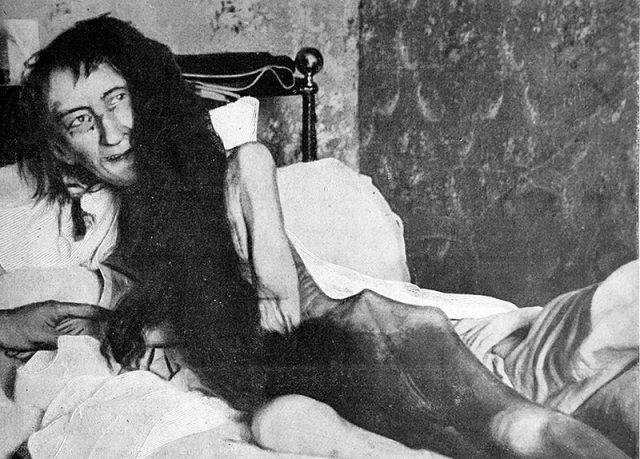If Blanche Monnier hadn’t made the wrong choice for a future husband, history might not have recorded her existence. She chose someone whom her mother disliked. In fact, Madam Monnier disliked her daughter’s love interest so much that she locked the girl in a tiny room until Blanche changed her mind. Blanche stayed with her choice, even after she had 25 years to think about her decision while living in the same tiny room. Perhaps she would have been willing to hold out even longer if it weren’t for the attorney general in Paris, who released Blanche from her prison cell.
Blanche was once a beautiful French socialite from a well-respected family. In 1876, when she was 25, the young Monnier fell in love with an older lawyer who lived nearby, and wanted to marry him. However, this decision made her mother unhappy, so she opposed her daughter’s will. Madam Monnier argued that her daughter could not marry a “penniless lawyer” and used all her means to prevent such a marriage. She tried to change Blanche’s mind, to forbid her decision, to plot against her, but with no success. The young woman had no intention of fulfilling her mother’s wishes.

It seemed as if Blanche suddenly disappeared from the face of the Earth, or at least Paris. None of her friends knew where she was. Her mother and brother mourned her and continued with their daily lives. Soon, Blanche was forgotten. Years passed, the lawyer she loved passed away, and Blanche’s fate remained a mystery. Until one day in 1901, when the attorney general of Paris received a strange anonymous note saying:
“Monsieur Attorney General: I have the honor to inform you of an exceptionally serious occurrence. I speak of a spinster who is locked up in Madame Monnier’s house, half-starved and living on a putrid litter for the past twenty-five years – in a word, in her own filth.”
Such claims were shocking for the police. It was a monstrous scenario, and no one could believe that Madam Monnier was capable of such a thing. She was a well-respected citizen in Paris, from an aristocratic family, awarded for her generous contributions to the city by the Committee of Good Works.
Officers were sent to inspect the house, and although they were denied entrance at first, they forced the door open and got inside. They searched the home and discovered a tiny, dark, foul-smelling room on the second floor. And when they pried open the windows, there was Blanche Monnier.

Or at least what was left of her. Covered in food and feces, with bugs all around the bed and floor, was the 50-year-old Blanche weighing barely 50 pounds. She didn’t resemble a human. Malnourished, lacking sunlight, and cut off from any social contact for 25 years, Blanche seemed like a scared animal when the officers took her out. Her mother was immediately arrested but died in prison after only 15 days. Before her death, she confessed to the inhumane treatment of her daughter.
Police were astounded and disgusted. One commented: “The unfortunate woman was lying completely naked on a rotten straw mattress. All around her was formed a sort of crust made from excrement, fragments of meat, vegetables, fish, and rotten bread…We also saw oyster shells, and bugs running across Mademoiselle Monnier’s bed. The air was so unbreathable, the odor given off by the room was so rank, that it was impossible for us to stay any longer to proceed with our investigation.”
An article in the New York Times published on June 9, 1901, reads: “Time passed, and Blanche was no longer young. The attorney she so loved died in 1885. During all that time the girl was confined in the lonely room, fed with scraps from the mother’s table–when she received any food at all. Her only companions were the rats that gathered to eat the hard crusts that she threw upon the floor. Not a ray of light penetrated her dungeon, and what she suffered can only be surmised.”
Blanche’s brother, Marcel, was first sentenced to 15 months in prison, but later released as he never physically restricted his sister’s movement. He even said that it was her choice not to move, not that she wasn’t permitted to leave. While the real author of the note that saved Blanche was never found, some people believe that it was Marcel.
As for Blanche, she was admitted to a psychiatric hospital. She never returned to society. She lived until 1913 and died in a sanatorium in Bois.
